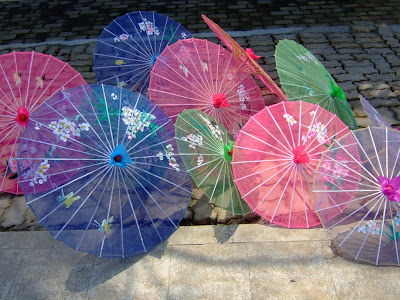Want to start a movement?
The average adult has 20 square feet of skin. It's the body's largest organ. May is an ideal month to think about skin cancer prevention. Many hospitals have free skin cancer screenings to kick off skin cancer awareness. But if a hospital in your area doesn't offer the screenings, it's time to find a dermatologist, who will check your skin. In my opinion, preventative medicine is the single best investment you can make in life. Doctors can't explain why one person develops skin cancer and another doesn't, but they do know it's the most common form of cancer, and it's on the rise. In the United States, one in five people will be diagnosed with skin cancer in his or her lifetime, and melanoma is more life threatening than other types of skin cancer.
There are six steps you should take to protect yourself from skin cancer:
1. Limit your time in the sun, especially between 10 am – 4 pm.
2. Use sunscreen with an SPF of 30 and UVA/UVB protection, even on cloudy days. And, use a generous amount -- a shot glass portion, about 2 tablespoons. A family of four should go through a bottle of lotion every 3-4 days, according to skin doctors. It should be applied every 2 hours throughout a sunny day.
3. Wear sunglasses with UV protection.
4. Wear hats. I sometimes wear a visor on the hottest of days because it's cooler than a hat, but hats are better.
5. Avoid tanning beds like the plague. Never go near one.
6. Examine your skin every month after a shower. (I don't do this, but I should.)
Here's how to examine yourself:
1) Stand in front of a mirror, raise your arms and examine your body front and back, then the left and right sides.
2) Bend your elbows. Look at your forearms, the back of your upper arms and palms.
3) Next, look at the back of your legs and feet, your soles and in between your toes.
4) Use a mirror to examine the back of your neck and scalp.
5) Finally, check your private areas too.
Call your doctor, if you notice a suspicious mole or lesion.
Personally, I wish parasols would catch on in the 21st century. When you think about it, isn't it a good idea? A light dainty, or dark manly umbrella to cool and protect yourself from the harmful rays of the sun. Right? Envision portable shade that lets a soothing breeze through. I don't want to be a lone eccentric on this. If just 20% of the population carried them, I would too. C'mon people! Let's start a movement, called the Parasol Public ... or perhaps, the Parasol Pedestrians. It's the smart thing to do, and we'd look younger than the rest of the population. Who's with me?
 . I recommend two of the brand's foot accessories, when a Dr. Scholl's counterpart doesn't work: the Killer Kushionz, a thin nearly full insole that easily slides into high heels and the Tip Toes, or ball-of-foot cushions, which stop your feet from sliding forward. Both have sticky tabs with adhesive backings and are invisible worn in open toe shoes. I'm using the Killer Kushionz in 3-inch stilettos and the Tip Toes in flats to absorb shock and provide a little extra support. They're more expensive than Dr. Scholl's products, so you might forgo the pricy combination kits and buy just the shoe pads needed to resolve your foot discomfort. However, they are pretty, and your shoes will be stylish inside and out. Sold online and at Ricky's-Drug-and-Beauty stores in New York City. Average cost: $3.00 - $12.95 a piece.
. I recommend two of the brand's foot accessories, when a Dr. Scholl's counterpart doesn't work: the Killer Kushionz, a thin nearly full insole that easily slides into high heels and the Tip Toes, or ball-of-foot cushions, which stop your feet from sliding forward. Both have sticky tabs with adhesive backings and are invisible worn in open toe shoes. I'm using the Killer Kushionz in 3-inch stilettos and the Tip Toes in flats to absorb shock and provide a little extra support. They're more expensive than Dr. Scholl's products, so you might forgo the pricy combination kits and buy just the shoe pads needed to resolve your foot discomfort. However, they are pretty, and your shoes will be stylish inside and out. Sold online and at Ricky's-Drug-and-Beauty stores in New York City. Average cost: $3.00 - $12.95 a piece.













